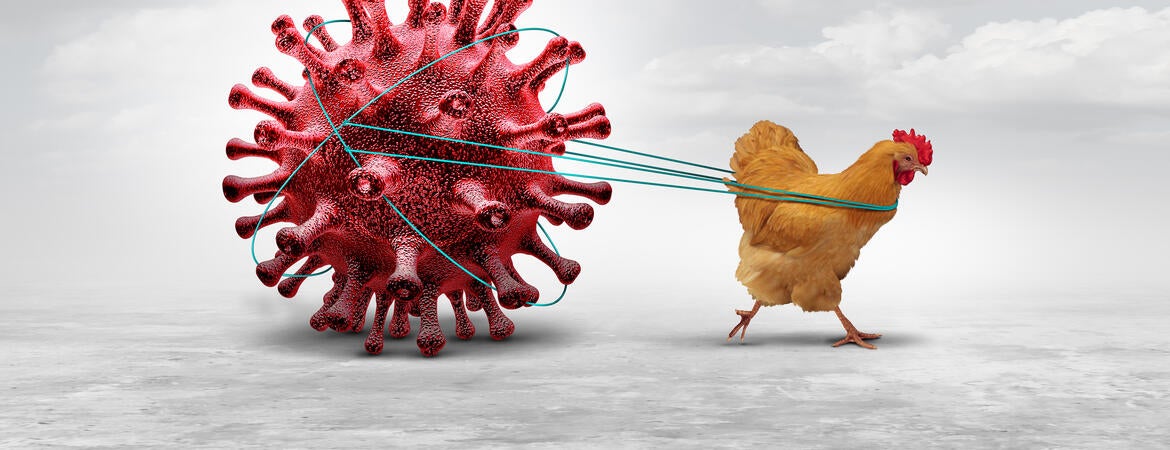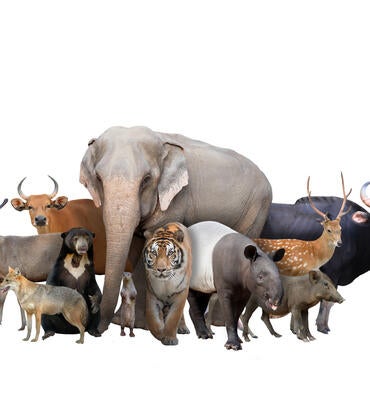
The World Health Organization has raised concerns about the spread of H5N1 bird flu, the disease caused by infection with avian (bird) influenza (flu) Type A viruses. Currently, H5N1 bird flu is causing outbreaks in U.S. poultry and dairy cows.
Dr. Rajesh Gulati, interim chair of internal medicine at the University of California, Riverside School of Medicine, answers some questions about H5N1 bird flu. Gulati is the associate dean of graduate medical education at UCR and a practicing hospitalist at Riverside Community Hospital.
Q: How is this new virus strain behaving differently than strains in earlier outbreaks?
This new strain of avian influenza (H5N1) is different from earlier strains because it has adapted and changed. It has used new genetic material from wild bird genes and infected more wild bird species than previous strains have. It has also been affecting mammals — wild ones, such as bears and foxes, but also domesticated ones, like dairy cattle and cats. We can see this new virus strain is also sticking around longer than previous outbreaks.
Q: How does the virus spread? How might it spread to humans?
The virus initially caused outbreaks in North American poultry species but has now been detected in many types of mammals as well as a few humans. It is spread through droplets or dust from infected animals, which a human can inhale or transfer from hands to the eyes/nose/mouth. We are not sure about the spread from person to person, but viruses are able to adapt and mutate rapidly. It is important to refer to the Center for Disease Control and Prevention for their research and recommendations.
Q: What precautions should people take?
Many precautions need to be taken by those in the dairy industry in direct contact with possibly infected animals, or those who often interact with wild birds. These individuals should be using PPE (such as respirators), creating isolated areas, and monitoring exposures. The virus is affecting dairy cattle; we want to make sure we are not consuming raw milk products, which contain many more dangerous microbes than possibly just H5N1 and are only drinking pasteurized milk.
In addition, for those of us with pet cats or dogs, it’s important to limit their interactions with wild birds to avoid any spread of the virus to our homes. We should also try to limit our interactions with wild birds, including their feathers, feces, or nests.
In general, one of the best ways to protect against viruses is frequent hand washing with soap and water and to avoid touching your hands to your face/mouth/nose/eyes if they are contaminated in any way.
Q: How can the spread be contained?
The current methods of control for H5N1 will likely be quarantining and culling (selective slaughter) of infected animals. If infection is suspected, it’s important to trace it back to the source and see the interactions along the way. If there is a need for a vaccine, COVID has shown us that our research centers can get them made (relatively) quickly and administered to prevent an outbreak from becoming catastrophic. For now, the virus appears to be contained to some domesticated mammals and the individuals who were interacting with them on a frequent basis.
Q: The virus has jumped to livestock and wild animals. How might this pose a danger to humans?
The lives of humans and the animals we consume and acquire products from are tightly linked. We interact frequently with domestic animals for farming, trade, and food production, which increases the opportunity for zoonotic transmission — infections that are spread between people and animals. It has the possibility of seriously disrupting our food supply and leading to significant economic losses.
Due to the rapid mutation, this virus can spread across species. It can lead to strains that are more virulent, that is, extremely severe or harmful, or even adapt itself to person-to-person transmission. This could lead to widespread outbreaks or even a global pandemic.
Header image credit: wildpixel/iStock/Getty Images Plus.




